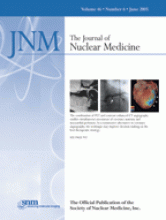The amazing development of cardiac imaging technology during recent years is resulting in a seemingly never-ending multiplication of options and tools that interrogate both morphologic and functional processes in the normal and diseased heart. One typical example of this evolution is the diagnosis of suspected coronary artery disease (CAD). “Does this person have significant coronary stenosis?” is probably the most frequently asked question in everyday practice for many clinicians. This simple question no longer has a simple answer. Instead, asking this question means, for the patient, the start of a steeplechase race, one with many hurdles, that will eventually lead to the catheterization laboratory (Fig. 1). Indeed, invasive angiography provides information on coronary anatomy, whereas on the other side of the wall, noninvasive imaging provides functional data that carry prognostic information. Noninvasive testing serves as a gatekeeper, thereby preventing access to the anatomic metrics in many patients who nevertheless have coronary disease but whose prognosis is deemed favorable.
In applying this strategy, the multiplication of noninvasive imaging studies creates several difficulties: Imaging techniques differ in accuracy between each other and within patients and disease subsets. Some imaging techniques are toys rather than tools. Because of physical constraints, they differ in resolution (in time, in space, and in the processes under representation). The fields of view do not necessarily superimpose, and tridimensional integration occurs only in the minds of individual experts. Image fusion between different modalities, although technically possible, has not reached the clinical setting. Costs and potential toxicity or side effects accumulate. Finally, and most important, discordant results are not infrequent and are usually dealt with by the prescription of yet more tests, until testing fatigue eventually leads to the use of invasive coronary angiography.
The study reported by Namdar et al. (1) on pages 930–935 of this issue of The Journal of Nuclear Medicine resolutely breaks away from this paradigm, recognizing that the wall between noninvasive and invasive coronary imaging will fall with the emergence of “noninvasive coronary angiography.” Indeed, the diagnostic accuracy of the most recent multislice CT techniques appears reliable in the majority of patients with known CAD (2). Because noninvasive imaging of the coronary arteries can now provide both functional and anatomic evaluation “in one go,” Namdar et al. (1) started their search for a one-stop shop and here provide evidence that integrated PET/CT is part of that race. With this new paradigm, the invasive approach becomes restricted to percutaneous therapy in patients in whom the extent and hemodynamic consequences of coronary stenoses are already known. Although not suggested in their article, one may envisage that patients will soon be referred directly to bypass surgery in the presence of the appropriate anatomic subsets, without the need for repeated invasive coronary angiography.
At the same time, the study by Namdar et al. (1) was limited by the fact that all 3 imaging techniques were applied suboptimally. This explains why so many “significant” lesions at either CT or invasive angiography did not seem to cause ischemia. The PET studies were restricted to relative flow imaging. This approach does not take full advantage of the quantitative capabilities of PET and severely underestimates the extent of ischemia in patients with multivessel disease (3). The performance of the 4-ring CT scanner has now been surpassed by 16- or even 64-ring devices with shorter rotation intervals (2). The invasive coronary angiograms were analyzed only visually, without quantification or invasive functional characterization of moderate stenoses, of which subjective grading is particularly inaccurate.
The current study was also flawed by the fact that PET functional results were analyzed together with both the noninvasive and the invasive anatomic data. Therefore, internal consistency was built in by design. Instead, it would seem to have been more meaningful to compare the noninvasive PET/CT results with state-of-the-art invasive angiography that combines quantitative coronary analysis and pressure-derived fractional flow reserve measurements, as would be appropriate for moderate stenoses of doubtful hemodynamic significance (4,5). Although not mentioned by the authors, it seems unlikely that actual treatment decisions with respect to either angioplasty or bypass surgery were respectful of the combined anatomic-functional findings, as reported here. Outcome data are not provided either.
Nevertheless, the contribution by Namdar et al. (1) is revealing in the sense that their vision accounts for the ongoing revolution in cardiac imaging—that is, the potential for noninvasive access to coronary anatomy. This asset will likely profoundly modify the evaluation and treatment strategy of patients with suspected CAD.
Flow chart showing current diagnostic work-up of CAD. Patients with intermediate likelihood of CAD who do not immediately qualify for angiography undergo noninvasive testing, often sequentially. Multiple imaging modalities and protocols are available, such as nuclear scintigraphy, stress echocardiography, and MRI. Diagnostic angiography is eventually performed on many patients to reduce level of uncertainty in presence of discordant or negative results. ECG = electrocardiography; Dob Echo = dobutamine echocardiography; MRI = magnetic resonance imaging.
Footnotes
Received Mar. 21, 2005; revision accepted Mar. 24, 2005.
For correspondence or reprints contact: William Wijns, MD, PhD, Cardiovascular Center Aalst, OLV Ziekenhuis, Moorselbaan 163, 9400 Aalst, Belgium.
E-mail: William.Wijns{at}olvz-aalst.be








